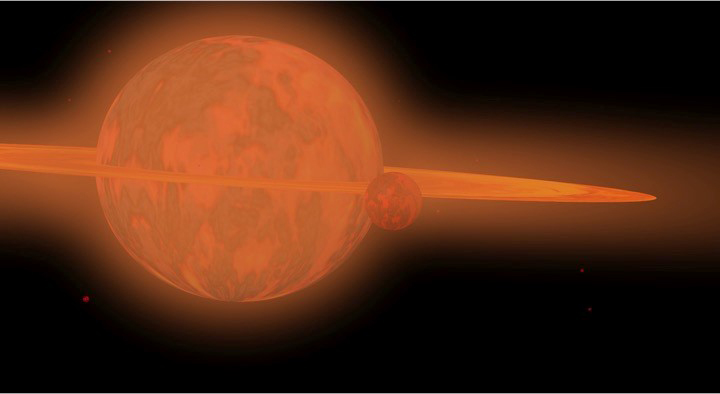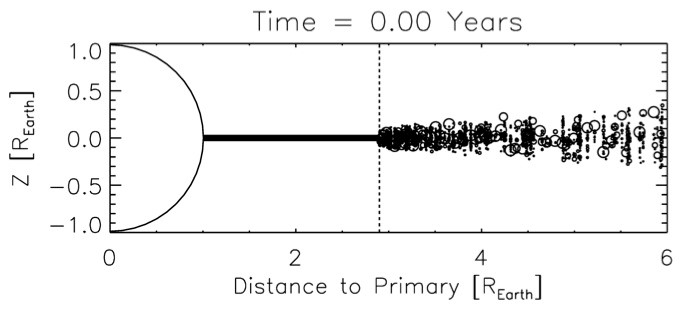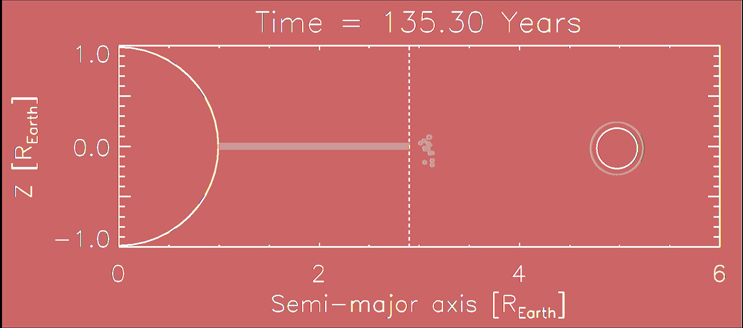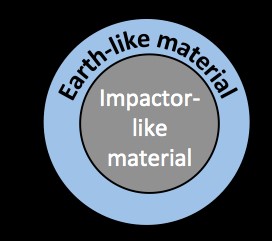View of a Modified Theory on Moon Origin
summarized by Laurie Averill, SSA

Proto-Earth with Fluid Disk and Proto-Moon (All images are courtesy NASA and are from a presentation for Solar System Ambassadors on June 14. 2016 titled “Origin of the Moon” by Dr. Salome, Scientist at the Southwest Research Institute
Lunar rocks that the Apollo astronauts collected paired with study of the Moon geology has brought the Giant Impact Theory of Moon formation under scrutiny. It does not explain why the iron content of the Moon is lower than Earth’s. Dr. Julian Salmone, Research Scientist at the Southwest Research Institute and expert in modeling how disks evolve around planets and how satellites form by accumulating disk material, described a phased model that extended the era of Moon formation from one to 100 plus years.

According to the model, the first phase of Moon formation began with the Giant Impact and rapid formation of the proto-Moon in less than a year. After the collision with the impactor, proto-Earth and impactor materials formed an outer fluid disk around the proto-Earth. (The proto-Earth and its inner fluid disk is on the left of the line representing the Roche limit.)The materials beyond the Roche Limit were free of the proto-Earths gravitational tides, immediately clumping and colliding to create the proto-Moon.
After the outer fluid disk formed the proto-Moon, Lunar formation continued much more slowly in the next phase with the gradual spinning off of material from the inner fluid disk of the proto-Earth.

When this fluid disk material (in gray) overcame proto-Earth’s gravitational tides due to angular momentum, it reached its Roche limit (the center line). At this point it broke free from the proto-Earth disk, formed clumps, and collided with the Moon to accumulate on the outer surface. As a result, the model indicates that the Moon has a structure of at least two layers. The inner 40% was formed in the first phase by the low-iron Giant Impact debris that was rich in impactor materials and made up the outer portion of a fluid disk that formed around proto-Earth. The outer layer that is several hundred kilometers deep accounts for about 60% of the Moon was formed in the next phase by the gradual accretion of materials from proto-Earth’s the inner fluid disk containing more proto-Earth-like materials.

Confirmation of the model can be made by drilling deeply into the Moon to explore the impactor-rich materials 200 kilometers or more below the surface.
